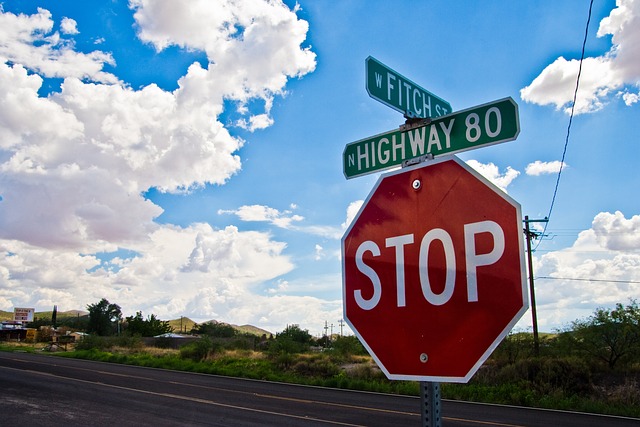Panel signage combines form, function, and material variety to meet diverse business needs. Its manufacturing involves precise choices from recycled plastics to oak finishes that affect durability, aesthetics, and cost. Understanding these layers helps you select panels tailored to specific environments, whether for outdoor security or indoor versatility. Discover how each element shapes the final product’s effectiveness and value in professional settings.
Essential information on panel signage: Types, materials, and commercial uses
Panel signage serves as an efficient medium for brand messaging, public safety, and directional guidance across business and retail environments. Major categories of panel signage range from flat panels for standard information display to more advanced options like LED illuminated signs, digital display panels, and versatile wayfinding solutions. Custom signage panel fabrication allows businesses to achieve a tailored impact with creative layouts and finishes, Access now for any contemporary requirement.
Additional reading : How Are UK Businesses Adapting to Post-Brexit Economic Changes?
Materials matter for durability and design flexibility. Aluminium composite panels for signage stand out for their lightness, weather resistance, and longevity, making them a top choice for durable outdoor sign panels. Acrylic sign panels deliver a sleek, high-end effect, appreciated for custom acrylic applications in both professional and retail settings. Glass sign panels provide modern, clean aesthetics inside high-traffic or upscale spaces.
From large illuminated storefront signs to detailed post and panel wayfinding systems, each sign type is engineered to provide visibility, compliance, and long-lasting performance in dynamic environments. Choosing the correct combination of material and lighting ensures effectiveness whether used as static displays or digital, interactive solutions.
Topic to read : How Are UK Businesses Innovating in the Post-Brexit Landscape?
Material selection and manufacturing processes for panel signage
Comparative properties of popular signage materials: aluminium, acrylic, glass, composites
In 2025, aluminium composite panels for signage remain a leading choice for durability. These panels feature weather-resistant sign panels, ideal for outdoor settings. Their corrosion resistance suits applications needing fire-resistant signage panels and custom signage panel fabrication. In contrast, acrylic sign panels provide a lightweight alternative that excels in visual clarity for branding or directional uses. Acrylic is often favored in environments where personalization, such as bespoke designs or 3D effects, enhances visibility. Glass sign panels offer premium aesthetics with high durability but can be heavier and costlier, commonly serving prestige entrances.
Step-by-step manufacturing process: from material sourcing to finishing and quality checks
The manufacturing process of signage panels begins by selecting the right composite materials, considering properties like weather resistance, fire-safety, and intended mounting options for signage panels. Raw sheets—be it for aluminium composite panels for signage, acrylic sign panels, or glass sign panels—are precision cut using CNC equipment. Printing follows, employing either screen or digital methods. Panels are then covered with protective coatings to boost weather resistance, fire performance, and lifespan. Rigorous quality checks, including testing of fire-resistant signage panels, ensure compliance before final delivery.
Innovations in signage panel manufacturing and customisation practices
Recent trends emphasize fire-resistant signage panels and new technologies for custom signage panel fabrication. Modular mounting options for signage panels, improved layered constructions, and environmental initiatives enhance both the flexibility and sustainability of panel products. Manufacturers are integrating digital features, such as high-resolution printing for glass sign panels and more secure fixture innovations for aluminium composite panels for signage. This evolution ensures that each signage panel meets current regulatory requirements and contemporary design expectations.
Design, customization, and installation options for effective signage
LED illuminated signs have become a standard in modern signage, thanks to their enhanced visibility and energy-efficient operation. Achieving optimal impact with LED illuminated signs depends on both thoughtful placement and careful selection of light output; high-definition display panels and digitally controlled brightness ensure consistent message clarity, particularly in varied lighting conditions. Maintenance of illuminated panels should be scheduled regularly to retain peak performance and extend lifespan.
Digital display panels for signage expand possibilities for dynamic content and remote updates. These flat digital signage screens, equipped with advanced digital signage technology trends, enable instant adaptation to promotions, emergency notifications, or branding campaigns. Integration with content management systems allows small businesses and enterprises to tailor messages as needed, enhancing public safety signage panels and everyday communications.
With a focus on custom signage panel fabrication, options like unique shapes, transparent versus opaque finishes, and bespoke dimensions help align signage with branding and site needs. Substrate choices ranging from durable outdoor sign panels like aluminium composite panels for signage to fire-resistant signage panels support both creative and functional requirements. ADA-compliant signage panels further extend inclusivity and compliance with current regulations, while clear, high-contrast graphic design techniques elevate information and accessibility.
Sound mounting options for signage panels whether using concealed fixings for a sleek look or robust visible mounts for easy access ensure weather-resistant sign panels remain secure outdoors. Signage panel installation tips include positioning panels at eye level, allowing for sufficient clearance, and considering lighting angles to maximize legibility for illuminated directional signage and branding with panel signs.
Pricing, Sustainability Considerations, and Finding Reputable Suppliers
Tiered Pricing Guidance Based on Material, Features, and Customization
Signage panel material cost comparison reveals that pricing for acrylic sign panels, metal panels, and composite options fluctuates due to raw material, finish, and the level of customization. Premium ranges, such as aluminium composite panels for signage and digitally printed large-format panels, introduce higher upfront costs but prove beneficial for durability and versatility. Less expensive alternatives, such as recycled plastic or basic acrylic, work for basic flat digital signage screens. For custom signage panel fabrication, detailed specifications and unique branding increase costs but also add long-term value for commercial uses of panel signage.
Durability, Weather-Resistance, and Maintenance for Long-Term Performance
Durability testing for sign panels is especially important for outdoor signage panel lifespan and weather-resistant sign panels. Aluminium composite panels for signage and acrylic are known for their performance against the elements—ideal for the maintenance of illuminated panels and external settings. Maintenance tips for outdoor signage panels include routine cleaning, checking mounting security, and inspecting for UV-fading or moisture ingress. Incorporating durability testing for sign panels into supplier requirements can prevent premature failure and extend usability, especially for illuminated emergency signage.
Sustainability Initiatives in Signage Materials and Supplier Selection
Environmental considerations for sign panels now drive business and public sector choices. Choose suppliers who use recyclable aluminium composite panels for signage and support signage panel recycling practices. Suppliers implementing sustainability initiatives such as recycled plastics and verified energy-efficient LED sign solutions should also show compliance with fire safety regulations for safer installations. For those sourcing locally, seek certified or recommended vendors prioritizing environmental considerations for sign panels and ethical manufacturing practices, verified with proper documentation.







